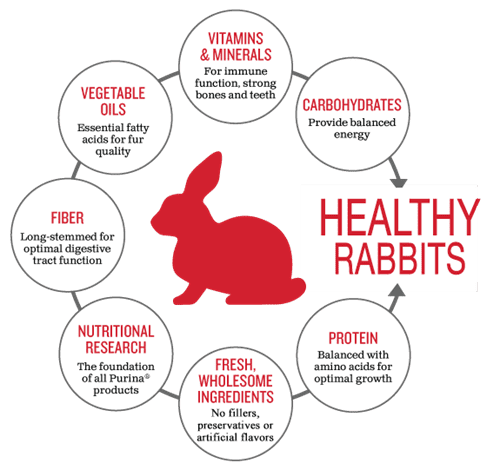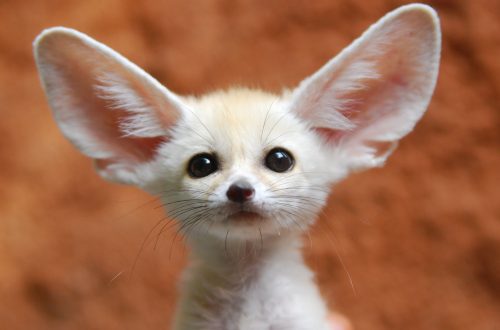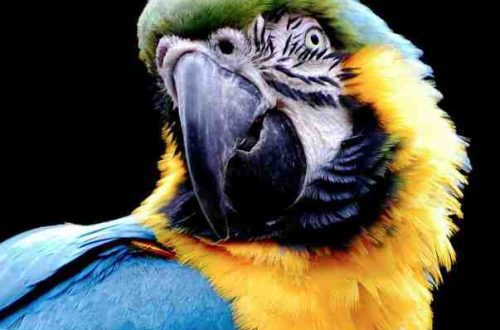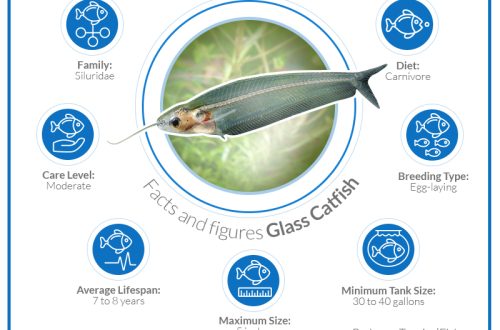
Awọn ipa ti yellow kikọ sii ni ilera onje ti ehoro
The necessary care for the health of rabbits should not depend on whether you keep one pet or an entire household. Complete and wholesome nutrition plays an important role in maintaining the health, good mood and ensuring the offspring of animals. Together with food, animals must receive all the nutrients and vitamins necessary for growth and development.
When choosing a diet, one must also take into account the fact that different feeds do not have the same effect on the condition of the fur and weight growth, for example, the organisms of young animals and lactating females have different needs. Compound feed will help in creating a healthy diet for rabbits.
Awọn akoonu
About compound feed
Compound feed is a mixture of various vegetable raw materials, which includes vitamins and microelements, vegetable protein and fiber, used to feed various types of domestic animals. Compound feed is made from crushed ingredients, mixing and pressing them. After that, the resulting mass is forced through a granulator with the desired hole size. Therefore, it is also known as pelleted food.
Combined feed is divided into three main types:
- complete food;
- awọn ifọkansi;
- feed additives;
When using a complete feed, nothing needs to be added to the diet, it fully contributes to meeting the needs of the animal. Important! When feeding rabbits with such food, they need to be provided with constant access to water.
Concentrates complement the feed of coarse and succulent products. Feed additives include vitamin-mineral, protein complexes and others.
Compound feed for rabbits
Obviously there is a difference in composition between rabbit feed and cattle feed. Traditionally, compound feed for small furry animals contains cake, bran, grain, grass meal. Usually, chalk and table salt are included to meet their calcium needs.
Compound feed can be of different composition, as it focuses on different groups of animals. There are young and adult animals, meat and fur breeds, lactating and pregnant females. The needs of different groups are slightly different. In this regard, the assortment offers food separately for different groups. Usually only the ratio of ingredients changes, not the composition of the feed itself. Insignificant food may vary depending on the time of year.
Making your own rabbit food
You can make feed for rabbits on your own. A meat grinder and a mixer are used to grind and mix products, you can also use a drill (as a cement solution is mixed). But for the preparation of granules, a special feed granulator is required. It has a set of different nozzles for making granules of different sizes.
Video – how to make do-it-yourself rabbit food:
Usually, the composition of the feed includes corn, barley, wheat bran, sunflower cake, grass meal or hay (fresh grass in season). The grain composition of compound feed saturates the animal’s body with all the necessary elements. An important component of the feed is also corn, since it contains the main reserves of vitamins. Herbal flour contains fiber, which is necessary for the normal functioning of the digestive system. Its amount in the feed should not be less than 35%. If there is a lack of fiber in food, then this can cause serious problems with the gastrointestinal tract and even be fatal to the animal.
Rabbit Feed Recipes
One of the simple but common recipes:
- 35% grass flour or hay;
- 25% barle;
- 20% sunflower top;
- 15% agbado;
- 5% alikama bran;
In the case of regular use of this compound feed composition in rabbit food, a permanent increase in body weight of about 1 kg per month can be achieved.
The recipe for this food may vary slightly depending on the time of year. So, in the summer, freshly cut grass is added to the compound feed, and in winter, grass meal or hay can be used. But it is worth paying attention that dew or poisonous grass can get into freshly cut grass and this can be deadly for the animal, but it is practically eliminated when grass meal is added.
The recipe for the winter period is slightly different, since rabbits usually lack minerals and vitamins at this time. This shortage is compensated by an increase in the amount of cereals in the feed due to the cake. Winter food recipe:
- 35% grass flour or hay;
- 30% barle;
- 20% agbado;
- 15% alikama bran;
It must be said that the average amount of pelleted feed for feeding is approximately 80-110 grams per day per rabbit.
Choosing feed to buy
What is the best feed for rabbits to buy? The following components are recommended (click on image to enlarge).
To date, the market assortment is replete and pleasantly surprises with different types of granulated feed. Cargill, founded in 1884, is considered the world leader in the production of combined feeds, which today offers its products in 25 countries.
The largest producer in Russia is the Miratorg holding, which produced about 2012 tons of products by the end of 800. The young manufacturing company “Russian Rabbit” made a positive difference, which made it its goal to develop Russian rabbit breeding.
As a rule, small companies are represented on the Ukrainian market. The Shedra Niva trademark, which has been operating since 2006, Prosto Kord and Top Kord, which have taken their positions on the market back in 2009, have proven themselves well.
When buying compound feed, which is produced industrially, in order to be sure of the quality of the product and the technology for the production of raw materials, you need to choose a reliable manufacturer. When choosing feed, you also need to take into account the purpose of keeping animals (for fur or meat), age group, seasonality. The manufacturer must provide this kind of information for each type of feed.
In conclusion, it must be said that the use of combined feeds when breeding rabbits brings many advantages in the end. Firstly, by using pelleted feed, you can reduce the time of rearing rabbits and save the number and health of the entire litter. Secondly, it allows, depending on the needs, to select the necessary balance of trace elements and vitamins for each individual group of pets. Thirdly, the use of compound feed simplifies the process of providing care for rabbits.





